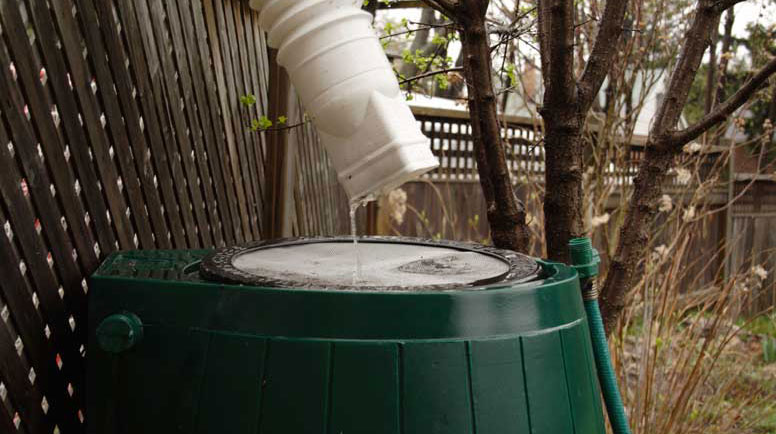Rainwater harvesting is the technique of gathering and storing rainwater for later use. It is a sustainable way to conserve water and reduce dependence on municipal water supplies.
Installing a rain harvesting system on residential, commercial, or industrial buildings to capture and store rainwater is increasingly popular.
In this article, we explore the benefits of rain harvesting systems, the different types of systems available, and how to design and maintain an effective one. Read this post until the end and remember these points during the discussions with your plumber.
Benefits of Rain Harvesting Systems
- Water Conservation: By using rainwater instead of municipal water for activities such as irrigation, flushing toilets, and washing clothes, you can save a significant amount of water.
- Reduced Water Bills: Using rainwater for non-potable uses can lower your water bill, as you are not paying for municipal water.
- Improved Plant Growth: Rainwater is free of chlorine and other chemicals found in municipal water supplies, which can improve plant growth and health.
- Increased Property Value: Installing a rain harvesting system can increase the value of your property, especially in areas where water scarcity is an issue.
- Sustainability: Rainwater harvesting is a sustainable solution to water management, as it reduces the reliance on municipal water supplies and preserves local ecosystems.
- Potable Water Source: Rainwater has several benefits when used as a source of drinkable water due to its lack of hardness. It prevents the scale build-up that might take place in home appliances when using alternative water sources. The appliances’ lifespan will be extended as a result. Also, it lowers the amount of soap or detergent required in dishwashing and laundry appliances, saving money on these soaps and detergents.
- Best-Tasting Water: Some of the finest-tasting water is produced when rainwater from a potable rainwater harvesting system is properly filtered and disinfected. Moreover, it does not have the chemicals present in municipally treated water, like fluoride and chloramines (chlorine).
Click here – 10 Benefits to Study MBBS from Philippines in 2023
Types of Rain Harvesting Systems
Although there are many types of rain harvesting systems, these are some of the most notable ones you will find.
- Roof Catchment System: This system is the most common type of rain harvesting system, which involves collecting rainwater that falls on the roof and directing it to a storage tank through gutters and downspouts. You can even use large barrels to collect all the rainwater.
- Ground Catchment System: This system collects rainwater from the ground surface and directs it to a storage tank through a series of catchment basins.
- Combined System: This system combines the roof catchment and ground catchment systems to maximise the amount of rainwater collected.
- Green Roof System: A green roof system uses plants and vegetation to absorb and filter rainwater, reducing runoff and improving water quality.
Designing a Rain Harvesting System
When designing a rain harvesting system, there are several factors to consider, such as the size of the roof, the amount of rainfall in your area, and the water demands of your household.
Here are some tips for designing an effective rain harvesting system. Discuss these with your plumber in Point Cook and ensure the best plumbing service.
- Calculate Your Water Needs: Determine how much water you need for non-potable uses such as irrigation, toilet flushing, and laundry.
- Choose the Right Tank Size: Select a tank size that can accommodate your water needs and fits your available space.
- Install a Filtration System: A filtration system will remove debris and other contaminants from the rainwater, ensuring it is safe for non-potable uses.
- Install an Overflow System: An overflow system will prevent water damage and flooding in case of heavy rain or a full tank.
- Maintenance: Regular maintenance is essential to ensure the system is functioning properly. Clean gutters and downspouts, check for leaks, and monitor water levels in the tank.
Click here – The Importance of Regular Plumbing Maintenance in Point Cook
Disadvantages of Rainwater Harvesting
Harvesting rainwater is an excellent eco-friendly plumbing upgrade. However, even this has some downsides. Even though the pros certainly outweigh the cons, you should know these before deciding your next step.
- Space Requirements: Rainwater tanks require space for installation. In urban areas where space is limited, this may not be feasible.
- Maintenance: Regular system maintenance is required to ensure it is working correctly. This includes cleaning the gutters and filters, inspecting the tank for damage, and ensuring the system is free from contamination.
- Water Quality: The quality of the harvested rainwater may not be suitable for all uses, particularly for drinking water. The water can contain pollutants, such as bird droppings, leaves, and other debris, that can affect the taste and quality of the water.
- Dependence on Rainfall: Rainwater harvesting systems depend on rainfall, so if there is a drought or prolonged dry spell, the system may not be able to provide enough water.
- Seasonal Variations: The amount of rainwater collected can vary seasonally, with more rain in some months than others. This can affect the availability of water throughout the year.
- Contamination: There is a risk of contamination from the roof and gutters. This can include bird droppings, pesticides, and other pollutants that can affect the water quality.
- Legal Requirements: There may be legal requirements to obtain permits and approvals before installing a rainwater harvesting system, and the system may need to meet certain standards and regulations.
Final Thoughts
Rain harvesting systems are a sustainable solution to water management. They can provide numerous benefits for homeowners and businesses. Whether you choose a roof catchment or ground catchment system, it is important to design and maintain the system effectively to maximise the amount of rainwater collected and ensure it is safe for non-potable uses.
If you want to discuss this further, we recommend you speak with NLK Plumbing.
NLK also provide 24/7 emergency plumbing service, so you are never alone. Their vast experience would ensure you have the best service possible.






